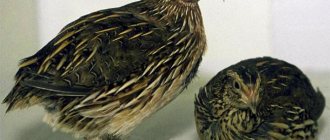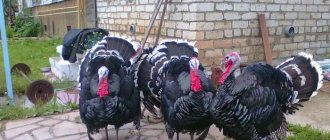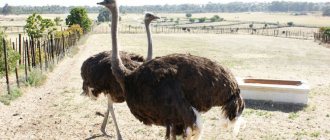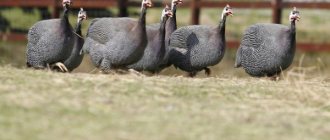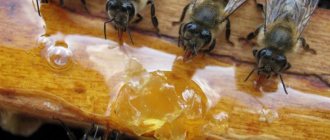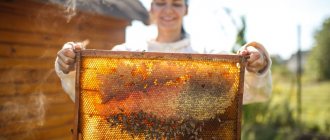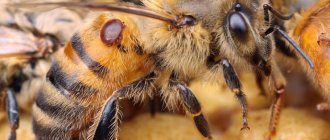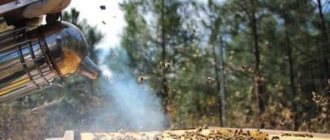Each beekeeper has his own path. For some, beekeeping is the main source of livelihood, while for others it is a pleasant pastime. In some cases, there are entire dynasties where secrets are passed on from fathers to children; in others, one has to begin to comprehend the basics, as they say, “from scratch,” out of necessity or because of an opportunity that arises.
It is for such inexperienced beekeepers that it is very important to learn from the very beginning how to properly handle bees. Let's consider the most vital questions that most often concern beginners.
You can read interesting information about how bees make honey in the article on our website.
Preparing to breed bees
The first question that interests a novice beekeeper is how to breed bees correctly and by what methods? The creation of bee colonies takes place in several stages.
Basic recommendations
- Increasing knowledge about the characteristics of insects, care, upcoming work, possible pests.
- Being near plants, there are a sufficient number of them.
- Open access to honey plants for insects. If there are no plants nearby, then it is necessary to organize regular transportation to such places.
- Preparation of large financial investments.
- Purchases of equipment, feed, hives.
- Construction of premises, a workshop, arrangement of a winter hut.
Question seven: legal basis
A novice beekeeper must take care that his hobby does not cause discomfort to other people or legal troubles. The problem lies mainly in the fact that the legislation regulating the maintenance and breeding of bees in our country is extremely imperfect. The Federal Law of the Russian Federation “On Beekeeping” has been at the stage of development and approval for a long time. Therefore, beekeepers have to be guided by the Federal Law “On personal subsidiary plots” dated July 21, 2003, veterinary rules approved by Order of the Ministry of Agriculture of the Russian Federation No. 194 dated May 19, 2016, as well as regional laws adopted in individual subjects of the Federation (for example, the Kostroma region “ On the placement and arrangement of apiaries in populated areas of the Kostroma region", approved 03/01/2007 No. 124-4-ZKO, Arkhangelsk region "On beekeeping", approved 12/20/2006 No. 1008, etc.). Most of these acts have significant shortcomings, and many of their provisions contradict each other.
However, when breeding bees “for oneself”, when there are only a few hives installed in the garden, problems with neighbors, as a rule, do not arise - it is not difficult for the bee owner to plan the placement of his apiary in accordance with the norms and standards for keeping insects.
The placement of hives should be carried out at a distance of 20 m from neighboring residential premises (closer - only with the consent of the owners of the premises), and at least 2 m from the land use boundary . The apiary must be surrounded by a solid fence or dense hedge at least 2 m high. The law does not limit the number of bee colonies that can be placed on a site, but gives the right to the heads of village administrations and gardening associations to regulate this parameter in accordance with local conditions and circumstances. In addition, bees are usually not recommended to be kept near public buildings, schools, medical institutions and other similar objects.
If the owner of a site wants to keep bees “for himself,” he needs to familiarize himself in detail with the legislative acts that regulate such an activity in his place of residence. For those wishing to start a small beekeeping business, the best option would be to obtain advice from an experienced lawyer.
Queen and young
There are many ways to breed bees in an apiary, but for beginners, the best option is to make layering. The process itself is not complicated, necessary for any apiary.
To create a new family, you need to remove 2 frames with brood and 2 food frames from the hive.
- These frames are installed in the new hive and separated from the “parent” hive.
- Then it is not the fertile uterus that is placed in the new family, and therefore the adult individuals return to the old uterus in the “parental” hive, and the young ones create a new colony
- After 2-5 weeks, the young queen grows eggs, replenishing the family with new individuals.
The note! Such a small, artificially formed family is called a nucleus.
This kind of bee breeding does not require any special knowledge or skills from a novice beekeeper. Then the young bees only need care and proper maintenance. As soon as the bees begin to produce honey, this is followed by the process of transporting honey.
Which hive to choose
There are 3 types of hives used by beekeepers: Dadanov hives, multi-hull hives and bed hives. Each hive consists of several parts:
- bottom - can be blind or detachable;
- body – one or more in which frames are placed.
- roof liner - for top insulation;
- roof - has different shapes, but a flat surface is preferable.
For a beginner at home, it is better to try raising bees in a Dadanov single-frame hive with store-bought extensions. This is a standard house for 12 nesting frames measuring 435*300 mm and half-frames (435*135), from which honey is pumped. Experienced beekeepers sometimes complicate the design by using double-hull housing, but this is a rare occurrence.
The disadvantage of the multi-hull design is its heavy weight. It will be difficult for the beekeeper to control the swarming state of the colony in the lower building, since the upper parts will have to be raised. A honey case will weigh between 30 and 60 kg on average. For this reason, 12-frame standard hives are more often used. They are lighter and easier to use.
Occasionally in apiaries you can find a beehive with 16, 20 and 24 frames. Especially novice beekeepers choose this design. It is convenient to expand a family in them by installing additional frame cells. The volume of the nest can be adjusted using a special delimiting board.
In such hives, it is possible to plan a two-queen keeping of bees by placing partitions between the two families. Experienced beekeepers still note some disadvantages of using such hives during wintering. For example, they believe that the design has not yet been brought to perfection. It is difficult for bees to spend the winter in beds due to the lack of normal air circulation.
Important! Whatever hive you choose, you must remember that there should be no cracks or drafts inside it. In summer, you should not allow overheating; in the cold season, make sure to maintain heat.
Many beginners ask the question: what colors should they paint their hives? The answer can be unequivocal - in all light colors, except black and red. Insects simply do not notice these colors.
Bee colony selection
A standard bee package consists of 4 or 6 frames lined with bees. A 4-frame bag contains 2 covering frames with food (3-4 kg of honey) and 2 frames with brood. In addition, such a bee package must contain at least 1.5 kg of bees and a young queen.
The most important point when purchasing is to determine the quality of the uterus.
Indicators of high uterine productivity
- Quantity and quality of brood . Ideally, the frame is completely seeded with brood, and the caps are even and identical, without gaps;
- Health and age of the uterus . It can be easily distinguished by its longer abdomen, not covered by wings, and its location in the center of the family. The uterus should not have underdeveloped wings, torn legs or other defects. The larger it is, the better.
Bees must be mobile, without a large amount of dead bees (no more than 20 bees).
Example of a successful apiary
A good example of a properly constructed beekeeping structure is the Rusin apiary. This is a family business that started with one gifted family. The apiary is located in the Novoburassky district, Saratov region and has about 200 bee families. Having learned the basics of beekeeping for beginners, the owners of the apiary managed to significantly increase it and make it profitable.
Now it is a successful enterprise that produces large quantities of honey and other bee products. This is a great indicator of how you can start your own beekeeping company and become one of the lovers of these unique insects.
Beekeeping method for beginners
Rotational breeding, or keeping bees year-round, is a common method that is great for beginners. It is used to preserve the health of bee colonies during wintering and to prevent disease.
Main stages
- Spring honey collection is carried out in places with large concentrations of honey plants. The hives are regularly cleaned of excess honey and young insects, as bees tend to swarm.
- Formation of new bee colonies - transfer of queens and young animals to prepared premises.
- After collecting individuals around the queen bee, they are transferred to the hive. The resulting colony is then regularly checked to assess the quality of the brood.
- If the uterus does not take root, then it is replaced.
- Preparing bee colonies for wintering - inspecting the hive, forming a nest, preparing food, preventing diseases.
- Wintering control - inspection and feeding.
Beekeeping for beginners - where to start?
Beekeeping is an interesting, but at the same time quite complex activity that requires attention, regular time to work in the apiary, and a love for insects. But to take the first step, you need to decide the following questions for yourself:
- Designate a location where evidence will be installed.
- Select the type of bee houses and decide whether they will be purchased in specialized stores or made independently. It is important to understand that individual production will require time, some effort and skills in handling wood or synthetic building materials.
- After this, select the breed of bees that will be purchased. This is not so easy for a beginner beekeeper, so sometimes they resort to the services of specialists.
- By understanding the basics, in the future it will be possible to acquire additional devices, instruments and other equipment that will make the beekeeper’s life easier.
Key principles of keeping bees in the winter and spring seasons
To grow strong bee colonies capable of producing abundant nectar, it is necessary to carefully care for them in winter and spring.
Such supervision involves regular monitoring of the temperature, the condition of the brood, the well-being of the queens and bees, and the number of dead animals.
It is necessary to provide comfortable living conditions for insects in their home, adequate nutrition, and the ability to fly around to perform cleaning functions.
In winter, you should definitely watch the hives, and such attention will give positive results.
Features of care
Bees require care all year round. Work begins in the spring; the recommended opening temperature for the houses is +12°C. Overwintered bee colonies are checked, frames are added, the queen lays eggs, and dead bees are removed. Food supplies are controlled, the bees and the queen are given syrup feeding. The entrances open slightly. Insects and queens tend to hang around frames lubricated with syrup. When there is abundant spring flowering, artificial foundation is added to increase honey collection.
Summer is the time to collect pollen and nectar. Periodically monitor the filling of the frames, preferably after 3 days. Filled ones are replaced with empty ones. Check the presence of water.
New bee colonies are being formed and nesting sites are being prepared. July is the period of the first pumping of honey.
In autumn, the size of the nests decreases, bees are brought in, and the wintering period begins. They prepare the cellar: whiten it, clean it, check the ventilation. It must be dark and dry. Broods do not tolerate foreign odors well. The hive is protected, rodents are able to gnaw through the walls, and the maintenance regime will be disrupted. They reinforce the walls with metal and wrap the hive with barbed wire. The size of the tapholes is reduced, leaving one third. The assembly of winter huts begins in September, the frames are checked. At the first frost, the hive is closed, it is advisable to remove the housing.
In winter, beekeepers periodically listen to bees. Having discovered a restless buzzing, the hive is taken out, inspected, repairs are made, and food is added. Honey is often replaced with syrup in winter, the proportion is 2 liters of water/3 kg of sugar.
Rotational bee farming
Rotation means renewal, alternation. When applied to beekeeping, this method can be defined as year-round care or the creation of optimal conditions for bees for fruitful activity.
In rotational beekeeping, there are several main directions, the implementation of which ensures the implementation of the method:
- The creation of families is artificial , and special attention is paid to their health. For this purpose, preventive treatments are carried out, as well as removal of drone brood;
- Providing families with proximity to honey plants at all times, starting in early spring;
- Conducting wintering in the wild in the most comfortable conditions, which ensures the early emergence of bees;
- Regular inspections at least once a week to clean the hives and pump out honey on time;
- Feeding not only before wintering or early spring, but also in the summer, when bees are especially active and they may not have enough food.
Insect Reproduction
It is important to know that there should always be several queens in the apiary, which, if anything happens, can replace their predecessors.
- Rearing queen bees is not easy. This requires the creation of special families where the required individuals will be born.
- They can be bred by swarming or grown artificially.
- One such method is as follows: After a colony with high productivity releases the first swarm, the honeycomb is cut out of the nest.
- Future queen bees mature in these honeycombs. The larvae are placed in colonies without queens.
The best period for breeding a queen is the warm season, when the insects have survived the winter and have enough strength, and when honey plants are at the peak of their flowering.
Advice for future beekeepers and mistakes made by beginners
Experienced beekeepers advise:
- breed only strong families and discard weak ones;
- You can strengthen a weak colony by adding a couple of brood frames to it at the exit, or by swapping families;
- leave at least 4-6 kilograms of honey in the hive at all times;
- expand the nest in a timely manner;
- locate the apiary in such a place that the distance to the honey plants is no more than a kilometer (if it is more than three kilometers, then the bees lose two-thirds of the nectar along the way);
- To control swarming, use the rule of the seventh frame: the appearance of the seventh frame of brood indicates readiness to form a swarm, and to prevent swarming, the previously mentioned layering is done.
Implementation methodology
In order for this area to work on a full scale, we must strictly adhere to the basic rules of automation in the area. All processes to improve methods for growing honey insects should be carried out after the launch of the project. However, some points must be reformatted to suit the national characteristics of climate, transport system and physiology of local families, etc.
Here are a few of the most significant steps for Russian industrial beekeeping, by implementing which you can reach mass production of the product:
- Use of factory equipment.
- Optimization and standardization.
- Selection and use of only special bee colonies.
- Continuous supply of feed and consumables.
- Anti-swarm techniques.
- Complete change of queens.
- Sufficient continuity with other sectors of the national economy.
- Improving the regulatory framework and changing the worldview of beekeepers.
Where to put the hives
In addition to the requirements for the “bee houses” themselves, there are also a number of necessary rules for their location:
- Bees are afraid of drafts. It is necessary to install evidence behind high fences (from 2 meters), where it will always be quiet and warm.
- The distance between hives in a row should be 5 meters. The rows are spaced 6 meters apart.
- “Houses” should be located at a height of 40 cm from the ground, otherwise morning dew and fumes will enter the hive, and moisture is more destructive for bees than cold and wind.
- Traffic near the bee housing should be minimal, no dogs or cats.
In such conditions, bees will be able to live and reproduce normally, and pumping honey will bring in good money. Proper beekeeping is a fascinating activity that brings a lot of pleasure, honey and money as a business.
It's not written on them
“A neighbor got bees last summer.
I placed three hives right next to the fence. But I was still working then, I came to the dacha only on weekends and didn’t really encounter bees. I retired in February, and then there was self-isolation, so I went to live in the country. And I’ve already been bitten four times,” Nadezhda Nikolaevna shares her pain. Moreover, she claims that the last time she was attacked not by one, but by three bees at once. The neighbor, to whom the pensioner immediately went for satisfaction, did not investigate: “How do I know which bees bit you - mine or someone else’s? It’s not painted on them.” "And what should I do now? - Stavnyuk asks for advice. — I already went to the chairman of the SNT and wrote a statement. There was a meeting where a neighbor said he had removed the bees. But it’s impossible to check - he doesn’t let anyone outside the fence. But I still see them in my area. My daughter says: what if next time not three, but 33 bees attack? You will have anaphylactic shock, and no ambulance will be in time. He advises me to sue my neighbor. But I still hope to reach an agreement peacefully. We have to live nearby...” By the way, court cases over bees, poultry, pigs and other living creatures that summer residents raise without taking into account the interests of their neighbors are by no means uncommon. This year alone, the Moscow Regional Court has already considered more than 20 similar cases.
Display in pavilions
In any location of the apiary there will be a period when the flower stalks will fade and you will have to select a new location. To make it convenient for the breeder to transport the hive, the structure should be made like a pavilion. The design is similar to a house that has wheels where the hives are installed. By the way, it is recommended to paint the hives in different colors so that the bees can find their home. Such a pavilion should be insulated so that bees can be kept in it all year round.
Creating a pavilion is quite an expensive undertaking, but it will be cheaper than making a regular stationary apiary.
